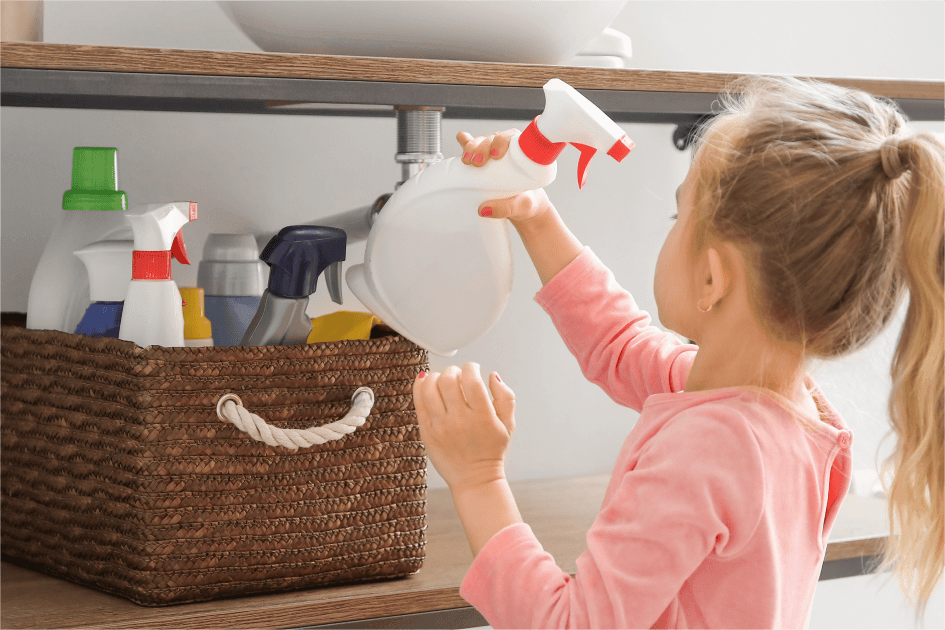Home should be a sanctuary where we feel safe and secure. However, various safety hazards lurk in our homes, posing potential risks if not identified and managed properly. From fire hazards to home security system, detecting and preventing these dangers is crucial for maintaining a safe living environment. This blog aims to educate you on common home safety hazards and provide practical tips for early detection and prevention. By being proactive, you can protect yourself and your loved ones from accidents and injuries.
1. Fire Hazards
Fire hazards are among the most dangerous threats in a home. Faulty electrical wiring can cause short circuits, leading to fires. Overloaded power strips are another risk; when too many devices draw power from a single strip, it can overheat and ignite. Unattended candles or cooking appliances are also major culprits, as a moment of inattention can lead to devastating fires. Lastly, heaters placed too close to curtains, furniture, or other flammable materials can cause them to catch fire.

How to Detect and Prevent Fire Hazards
-
Install Smoke Detectors: Place smoke detectors in key areas such as kitchens, bedrooms, and hallways. Test them regularly and replace batteries annually to ensure they are functioning correctly.
-
Regular Inspection of Electrical Cords and Outlets: Check for signs of wear, fraying, or overheating. Replace damaged cords and avoid using appliances with exposed wires.
-
Use Surge Protectors: Surge protectors can prevent electrical fires by regulating the power flow. Avoid overloading outlets and power strips.
-
Keep Fire Extinguishers Accessible: Place fire extinguishers in strategic locations, such as the kitchen and near fireplaces. Ensure all household members know how to use them.
-
Be Cautious with Heaters: Maintain a safe distance between heaters and flammable materials. Turn off heaters when not in use or when leaving the room.
2. Carbon Monoxide Poisoning
Carbon monoxide (CO) is a colorless, odorless gas that can be deadly in high concentrations. Common sources of CO include gas appliances such as stoves, water heaters, and furnaces, portable generators, and blocked chimneys or vents.
When gas appliances malfunction or are improperly ventilated, they can emit dangerous levels of carbon monoxide. Portable generators used indoors or too close to windows can also introduce CO into your home. Blocked chimneys or vents prevent CO from escaping, leading to a buildup of the gas inside.

How to Detect and Prevent Carbon Monoxide Poisoning
-
Install Carbon Monoxide Detectors: Place CO detectors near sleeping areas and other key locations. Test them regularly to ensure they are working correctly.
-
Annual Servicing of Gas Appliances: Have a qualified technician inspect and service gas appliances annually to ensure they are functioning safely and efficiently.
-
Ensure Proper Ventilation: Make sure gas appliances are properly ventilated. Keep vents and chimneys clear of obstructions to allow CO to escape.
-
Use Generators Safely: Never use portable generators indoors or near windows. Operate them in well-ventilated areas, away from living spaces.
-
Know the Symptoms of CO Poisoning: Symptoms include headaches, dizziness, nausea, and confusion. If you suspect CO poisoning, evacuate the area and seek medical help immediately.
3. Water Leaks and Mold
Water leaks and mold growth can cause significant damage to your home and pose health risks. Let’s take some common examples: Leaky pipes or faucets often go unnoticed until they cause visible damage. Roof leaks can lead to water infiltration, damaging ceilings and walls. Poor bathroom ventilation creates a humid environment conducive to mold growth. Now, let’s see how to address them.

How to Detect and Prevent Water Leaks
-
Regularly Check for Leaks: Inspect under sinks, around appliances, and in basements for signs of leaks. Address small leaks promptly to prevent larger issues.
-
Inspect Ceilings and Walls for Water Stains: Water stains can indicate roof leaks or plumbing issues. Investigate and repair the source of the leak as soon as possible.
-
Use Dehumidifiers: In damp areas such as basements, use dehumidifiers to reduce humidity levels and prevent mold growth.
-
Ensure Proper Bathroom Ventilation: Use exhaust fans during and after showers to remove moisture from the air. Consider installing a humidity sensor to automate fan operation.
-
Fix Roof Leaks Promptly: Regularly inspect your roof for damage. Repair or replace damaged shingles to prevent water infiltration.
4. Falls
Falls are a leading cause of injury in the home, particularly for young children and the elderly. Slippery floors, especially in bathrooms and kitchens, can cause falls. Cluttered walkways obstruct paths, increasing the risk of tripping. Poor lighting makes it difficult to see potential hazards, while loose rugs or carpets can cause people to slip.

How to Prevent Falls
-
Keep Floors Dry and Clean: Wipe up spills immediately and use non-slip mats in areas prone to moisture, such as bathrooms and kitchens.
-
Remove Clutter from Walkways: Keep hallways and stairs clear of objects. Store items in designated areas to reduce tripping hazards.
-
Ensure Proper Lighting: Install adequate lighting in all areas of the home, particularly in staircases and hallways. Use night lights in bathrooms and bedrooms.
-
Secure Rugs and Carpets: Use non-slip pads or tape to secure rugs and prevent them from moving. Avoid using loose rugs in high-traffic areas.
-
Install Handrails and Grab Bars: In areas such as staircases and bathrooms, install handrails and grab bars to provide support and prevent falls.
5. Other Poisoning:
In addition to carbon monoxide, poisoning of other chemicals and gases is also a serious hazard, particularly for young children. Household cleaners and chemicals, if ingested, can be toxic. Medications, if not stored properly, can be accessed by children. Lead-based paints can also cause lead poisoning if ingested or inhaled as dust.
As poisoning can lead to severe health complications and even death, detecting and preventing is is an essential task that we cannot overlook.

How to Prevent Poisoning Hazard
-
Store Chemicals and Medications Safely: Keep household cleaners and medications out of reach of children and pets. Use child-resistant locks on cabinets.
-
Keep Chemicals in Original Containers: Always store chemicals in their original containers with labels intact. Do not transfer them to other containers.
-
Test for Lead in Older Homes: If your home was built before 1978, have it tested for lead. If lead is found, take appropriate remediation steps to remove or encapsulate it.
-
Educate Family Members: Teach family members, especially children, about the dangers of household chemicals and medications.
-
Keep Poison Control Numbers Handy: Have the phone number for your local poison control center readily available in case of emergencies.
6. Electrical Hazards
Electrical hazards can cause shocks, burns, and fires. For example, damaged wiring or outlets can cause short circuits and fires; improper use of extension cords, such as running them under rugs, can lead to overheating; and outdated electrical panels may not be able to handle the electrical load of modern appliances, increasing the risk of fires.

How to Prevent Electric Hazards
-
Regular Electrical Inspections: Have a licensed electrician inspect your home’s wiring and electrical system regularly. Address any issues promptly.
-
Proper Use of Extension Cords: Avoid running extension cords under rugs or furniture. Use them only temporarily and ensure they are rated for the appliances they are powering.
-
Upgrade Outdated Electrical Systems: If your home has an old electrical panel, consider upgrading it to handle modern electrical loads safely.
-
Avoid DIY Electrical Work: Leave electrical repairs and installations to qualified professionals to ensure safety and compliance with building codes.
-
Educate Family Members: Teach family members about the dangers of electrical hazards and the importance of using electrical devices safely.
7. Home Security Threats
Home security threats can lead to break-ins, theft, and personal harm. Common sources include unlocked doors and windows and the lack of a security system. Unlocked doors and windows provide easy access for intruders, and without a security system, your home is more vulnerable to break-ins and theft.

How to Safeguard Your Home with Security System
-
Install Security Cameras: Place outdoor security cameras around the property to monitor activity and deter potential intruders. Use cameras with motion detection and remote viewing capabilities to keep an eye on your home from anywhere.
-
Use Deadbolt Locks: Install deadbolt locks on all exterior doors to enhance security. Ensure windows are equipped with secure locks as well.
-
Maintain a Well-Lit Property: Keep the exterior of your home well-lit, particularly around entry points. Use motion-sensor lights to deter intruders. For enhanced security, consider installing a floodlight outdoor camera that features both motion-sensor lights and a camera.
-
Install a Video Doorbell: A video doorbell allows you to see and communicate with visitors at your door from anywhere, adding an extra layer of security and deterring potential intruders.
-
Establish a Neighborhood Watch: Collaborate with neighbors to monitor and report suspicious activities. A strong community can enhance overall security.
Conclusion
Maintaining a safe and secure home requires vigilance and proactive measures. By identifying common safety hazards and taking steps to detect and prevent them, you can create a safer living environment for yourself and your loved ones. Regular inspections, proper maintenance, and the use of safety devices are essential in mitigating risks. Remember, a safe home is a happy home, and taking the time to address potential hazards will give you peace of mind and a sense of security.










Leave a comment
This site is protected by hCaptcha and the hCaptcha Privacy Policy and Terms of Service apply.